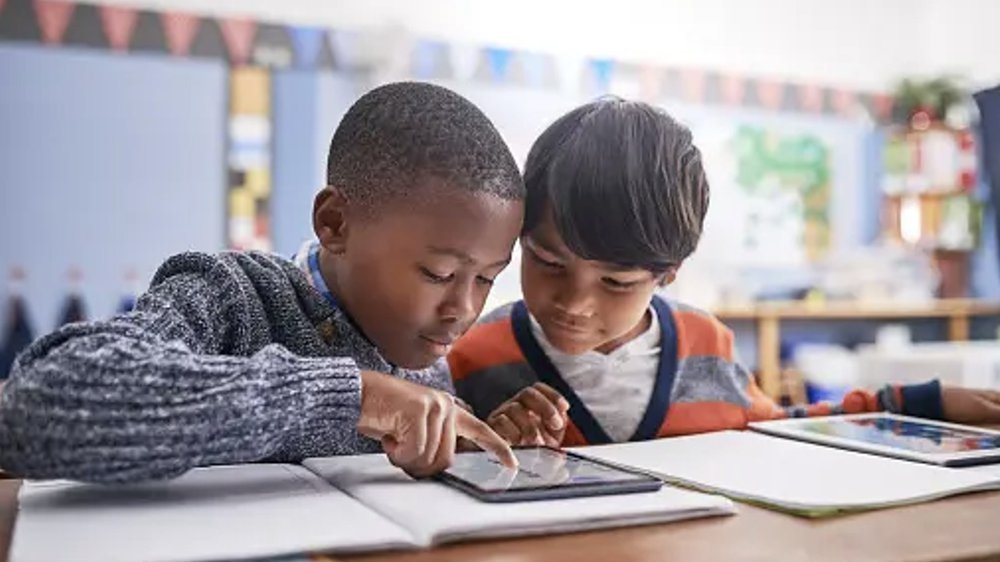Education technology can be a great accelerator for students, unlocking new levels of focus and learning. On the flip side, it can be a huge distraction. Internationally, one in three students says they have been distracted by technology. The interruption can be even greater for neurodivergent students who have challenges with attention, emotional regulation, time management and other executive functioning skills.
Awareness about conditions and the support students need is increasing. In turn that means educators are teaching more students with disabilities than ever. Right now there are 7.3 million students with disabilities enrolled in U.S. schools alone.
Understanding the differences between neurodivergent and neurotypical students can help education develop strategies that help all students to be successful in tech-enabled classrooms. A few examples of experiences neurodivergent students might have include:
● A student with ADHD may struggle to switch from playing a math-related computer game to discussing how mathematical operations work with the class because the games are more rewarding
● A student with autism might need predictability and struggle if a teacher suddenly takes over their screen to show the class a demonstration
● A student with sensory processing differences might be overwhelmed by loud sounds in video content
Working individually with students to identify specific accommodations or supports is the best way to create an engaging education experience. However, there are a few strategies that educators can use to begin making technology less distracting.
Set a Schedule
The school day is full of activity. Having a set, posted schedule for the school day or class period that identifies when students will use technology and when they will stop can help. Review the schedule with students and point out transitions. Following up throughout a school day or class period is also helpful. Educators can give subtle hints such as telling students when 15 and 5 minutes are left in an activity or displaying a visual countdown.
Actively Manage Online Behavior (When Needed)
Technology can be a powerful tool that enables students to learn in different styles, engaging with video content, interactive games, podcasts and more. It can also facilitate one-on-one and small group activities that let students learn beyond the classroom walls. But when educators need students to focus on the front of the classroom or come together to share what they’ve learned, technology may be a tempting distraction. A classroom management tool can allow educators to intervene and control what students are seeing on their screens. Educators can use such tools to guide students to the same digital resource, restrict access to certain websites, manage what individual students are doing or close all screens simultaneously.
Clearly Communicate Expectations
A safe, engaging learning environment often depends on clear rules. Technology is such a big part of daily life that it can be easy to assume all students know what is appropriate. That’s not always true for students with executive functioning challenges. Students who don’t automatically know the norms of using technology can feel overwhelmed trying to figure out the rules. Other students may lack impulse control, be distracted easily, or struggle to manage their own time.
Setting clear expectations with students for using technology overall can guide neurodivergent students and reduce potential disruptions. For students who are old enough to read, providing written instructions can go a long way. Younger students may benefit from directions with images or demonstrations of technology do’s and don’ts. Repeating expectations frequently can also help students understand what to do and foster their confidence and independence.
Create a Technology Station
Classroom design is important to support neurodivergent students. Educators who may already have sensory deprivation or input stations or alternative seating can build on this approach by creating a technology station. Creating a clear area where students will use technology creates a strong signal for students about what they should be doing and encourages self-reliance.
A technology station can also make transitions easier. When students are finished using technology they move physically away from devices which provides a clearer break from the previous activity and transition to the next.
Technology will continue to be a valuable part of the learning experience. Providing accommodations and adaptations so neurodivergent students can take full advantage of classroom tools supports them in their learning experience and beyond.
About the author
Al Kingsley is the CEO of NetSupport. He is an author, chair of Multi Academy Trust cluster of schools in the UK, Apprenticeship Ambassador, and chair of his regional Special Educational Needs and Disabilities Board. A 30 year veteran in the sector he has written books on EdTech, school governance, and school growth.











